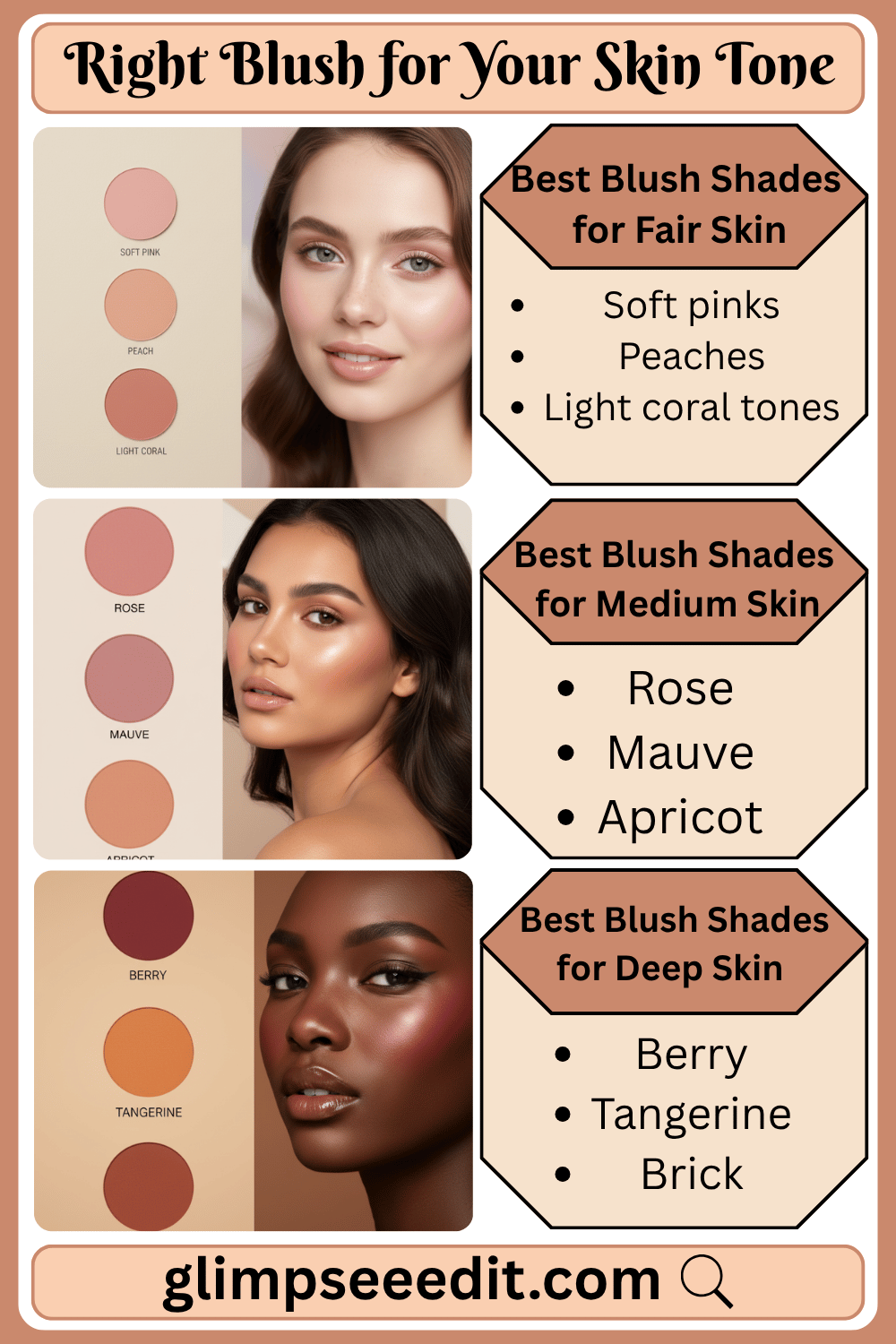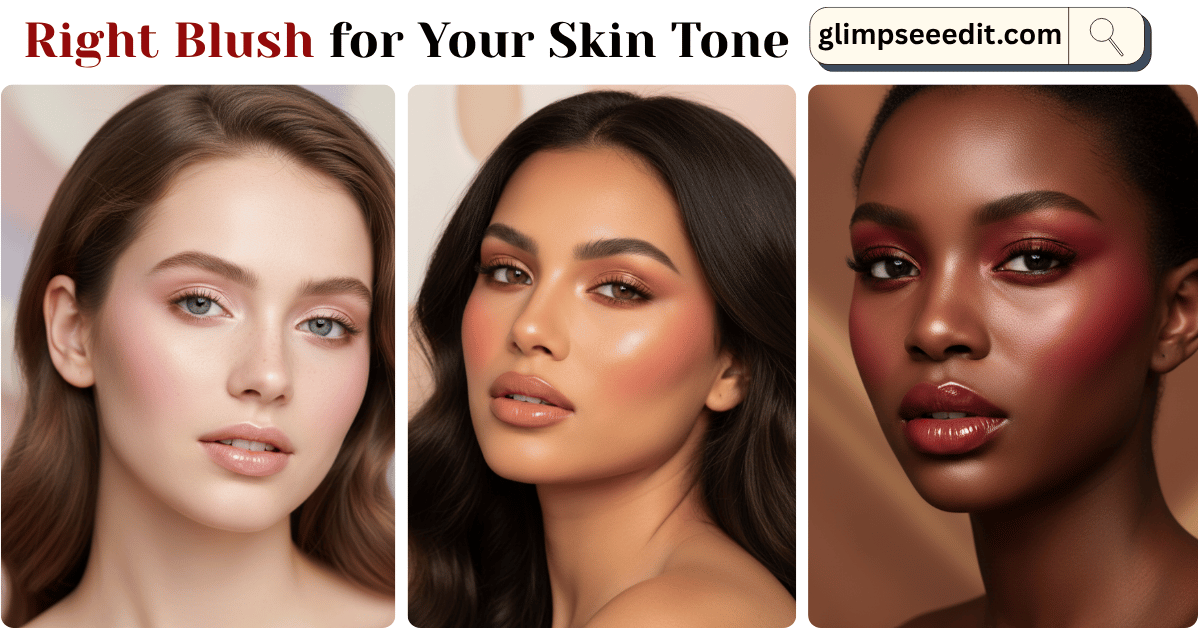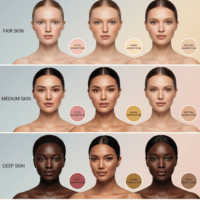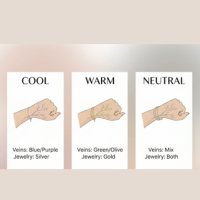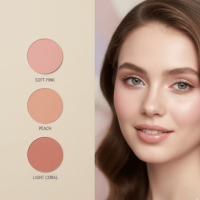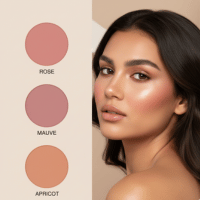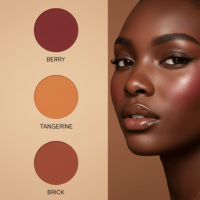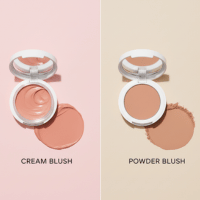Blush is one of those small makeup products that can completely change your look. However, picking the wrong shade can make your face appear dull or uneven. That’s why understanding your skin tone and undertone is essential when choosing the right blush for your skin tone. By knowing whether your skin is fair, medium, or deep, and whether it has cool, warm, or neutral undertones, you can select a blush that not only complements your complexion but also enhances your natural glow. In this guide, we’ll walk you through everything you need to know so you can find the perfect blush effortlessly.
Understand Your Skin Tone to Choose the Right Blush for Your Skin
Before choosing the perfect blush, it’s important to understand your skin tone and undertone. Your undertone is the subtle hue beneath the surface of your skin, and it usually falls into one of three categories: cool, warm, or neutral. Cool undertones have a hint of pink or blue, warm undertones lean toward yellow or golden, and neutral undertones are a balanced mix of both.
A simple way to identify your undertone is by looking at the veins on your wrist.
If your veins appear bluish, you likely have cool undertones.
If they look greenish, your undertones are probably warm.
For a neutral undertone, the veins may appear a mix of blue and green.
Another quick trick is to test jewelry gold jewelry tends to complement warm undertones, while silver works best for cool undertones. By knowing your undertone, you can make smarter choices when selecting blush, ensuring that the color enhances your natural beauty instead of clashing with it.
Best Blush Shades for Fair Skin
When it comes to fair skin, choosing the right blush can make a significant difference in achieving a fresh and radiant look. Soft pinks, peaches, and light coral tones work beautifully because they add a natural flush without overwhelming the complexion. These shades blend seamlessly and bring out a healthy glow that enhances your features.
It’s best to be careful with darker or overly orange blushes, as they can look harsh on fair skin. Instead, choose shades that match your undertone: soft pinks work beautifully for cool undertones, while peachy hues enhance warm undertones. Picking the right blush for your fair skin helps you achieve a natural, balanced, and flattering glow.
Best Blush Shades for Medium Skin
Medium skin tones have the flexibility to experiment with a variety of blush shades, but some colors enhance the complexion more beautifully than others. Rose, mauve, and apricot hues are particularly flattering because they add warmth and dimension without looking too harsh. These shades effortlessly brighten the face and highlight your natural glow.
For those with warm undertones, peachy or apricot blushes enhance the golden tones, creating a harmonious and radiant look. Cooler undertones are complemented by soft rose or mauve shades, balancing the complexion naturally. Choosing the right blush for your skin tone ensures your cheeks have a subtle, healthy flush, giving a vibrant yet natural finish that complements your overall makeup perfectly.
Best Blush Shades for Deep Skin
Deep skin tones look stunning with bold, vibrant blush shades that enhance their natural radiance. Berry, tangerine, and brick tones are particularly flattering because they create a rich, glowing effect without appearing ashy or muted. These colors bring warmth and depth to the cheeks, highlighting facial features beautifully.
It’s important to choose highly pigmented formulas for deeper skin, as they provide better color payoff and longevity. By selecting the most flattering blush for your skin, you can ensure that your makeup looks balanced and luminous, giving your cheeks a natural, healthy flush that complements your overall look. With the right shade and formula, your blush can elevate any makeup routine and make your complexion glow effortlessly.
Formula Matters — Cream vs. Powder
Choosing the right blush formula can make a noticeable difference in how your makeup looks and lasts throughout the day. Cream blushes are ideal for those with dry or normal skin because they provide a dewy, glowing finish that blends seamlessly into the skin. Their creamy texture helps the color melt naturally, giving a fresh and youthful appearance.
On the other hand, powder blushes are better suited for oily skin or long-lasting wear. They set quickly and offer a matte finish, which helps control shine while still adding a natural flush to the cheeks. By understanding the differences between cream and powder formulas, you can pick the one that not only complements your skin type but also enhances your overall makeup routine effortlessly.
Tips for Choosing the Right Blush for Your Skin Tone
Choosing the perfect blush isn’t just about picking a color you like it’s about enhancing your natural features. Consider your daily makeup routine: do you prefer a subtle, everyday glow or a bold, statement look? For fair skin, lighter shades like soft pinks work best, while medium and deep skin tones can experiment with warmer or more vibrant hues. Test the blush under natural light to see how it blends with your complexion. By following these tips, you can easily select the right blush for your skin tone and create a flattering, balanced look every time.
Blush Application Tips
Applying blush the right way can instantly brighten your face and give a natural, healthy glow. Start by smiling slightly to locate the apples of your cheeks, then gently sweep the blush upward toward your temples. This technique lifts the face and creates a subtle contour.
Remember to use a light hand, especially if you’re aiming for a natural look. It’s easier to build up color gradually than to remove excess. Additionally, blending well ensures that the blush looks seamless and avoids harsh lines. By following these simple steps, you can achieve a fresh, radiant appearance that complements your skin tone and overall makeup effortlessly.
FAQs About Right Blush for Your Skin Tone
How do I know my skin undertone?
You can determine your undertone by checking the veins on your wrist blue or purple veins usually indicate cool undertones, while greenish veins suggest warm undertones. Neutral undertones are a mix of both. Another simple way is to see which jewelry complements you better: gold for warm tones, silver for cool tones.
Can I wear any blush shade regardless of my skin tone?
While you can experiment with different shades, choosing a color that complements your skin tone and undertone ensures a more natural and flattering look. Shades that clash with your undertone may appear dull or overly harsh.
Should I use cream or powder blush?
It depends on your skin type and desired finish. Cream blushes work best for dry or normal skin to give a dewy glow, while powder blushes are ideal for oily skin or long-lasting wear.
How should I apply blush for a natural look?
Smile slightly to locate the apples of your cheeks, then sweep the blush upward toward your temples. Using a light hand and blending well prevents harsh lines and creates a seamless, radiant finish.
Can blush enhance my overall makeup look?
Absolutely! The right blush adds dimension, warmth, and a healthy flush to your face, complementing your skin tone and enhancing your overall makeup effortlessly.
Conclusion
Choosing the right blush can instantly enhance your natural beauty and bring a healthy glow to your face. By understanding your skin tone, undertone, and preferred formula, you can select shades that complement your complexion effortlessly. With the right techniques and a little practice, achieving a radiant, flattering look has never been easier.
